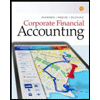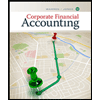
Principles of Accounting Volume 1
19th Edition
ISBN: 9781947172685
Author: OpenStax
Publisher: OpenStax College
expand_more
expand_more
format_list_bulleted
Question
thumb_up100%
tutor please solve and help me in this cost account inventry
![The following data refer to Brompton Company's ending inventory:
Item Code
Quantity
Unit Cost
Unit Market Value
Small
100
$ 250
$246
Medium
400
150
145
Large
600
170
162
Extra-Large
250
265
270
What is the ending inventory balance if the lower cost or net realizable
value rule is applied to each item of inventory? [Account Query][2]
A) $248,050
B) $246,050
C) $253,250
D) $252,850](https://content.bartleby.com/qna-images/question/bf6a4f67-02c5-4e91-88a6-f328ac663302/adac2e65-34a4-41c1-adb2-28518d7b1dc9/8r4ie2n_thumbnail.jpeg)
Transcribed Image Text:The following data refer to Brompton Company's ending inventory:
Item Code
Quantity
Unit Cost
Unit Market Value
Small
100
$ 250
$246
Medium
400
150
145
Large
600
170
162
Extra-Large
250
265
270
What is the ending inventory balance if the lower cost or net realizable
value rule is applied to each item of inventory? [Account Query][2]
A) $248,050
B) $246,050
C) $253,250
D) $252,850
Expert Solution
This question has been solved!
Explore an expertly crafted, step-by-step solution for a thorough understanding of key concepts.
Step by stepSolved in 2 steps

Knowledge Booster
Similar questions
- Calculate a) cost of goods sold, b) ending inventory, and c) gross margin for A76 Company, considering the following transactions under three different cost allocation methods and using perpetual inventory updating. Provide calculations for first-in, first-out (FIFO).arrow_forwardRetail Inventory Method The following information relates to the retail inventory method used by Jeffress Company: Required: 1. Compute the ending inventory by the retail inventory method using the following cost flow' assumptions (round the cost-to-retail ratio to 3 decimal places): a. FIFO b. average cost c. LIFO d. lower of cost or market (based on average cost) 2. Next Level What assumptions are necessary for the retail inventory method to produce accurate estimates of ending inventory?arrow_forwardCalculate the cost of goods sold dollar value for A74 Company for the sale on March 11, considering the following transactions under three different cost allocation methods and using perpetual inventory updating. Provide calculations for (a) first-in, first-out (FIFO); (b) last-in, first-out (LIFO); and (c) weighted average (AVG).arrow_forward
- Inventory Valuation Specific identification method Weighted average cost method FIFO method LIFO method LIFO liquidation LIFO conformity rule LIFO reserve Replacement cost Inventory profit Lower-of-cost-or-market (LCM) rule Inventory turnover ratio Number of days sales in inventory Moving average (Appendix) The name given to an average cost method when a weighted average cost assumption is used with a perpetual inventory system. An inventory costing method that assigns the same unit cost to all units available for sale during the period. A conservative inventory valuation approach that is an attempt to anticipate declines in the value of inventory before its actual sale. An inventory costing method that assigns the most recent costs to ending inventory. The current cost of a unit of inventory. An inventory costing method that assigns the most recent costs to cost of goods sold. A measure of how long it takes to sell inventory. The IRS requirement that when LIFO is used on a tax return, it must also be used in reporting income to stockholders. An inventory costing method that relies on matching unit costs with the actual units sold. The portion of the gross profit that results from holding inventory during a period of rising prices. The result of selling more units than are purchased during the period, which can have negative tax consequences if a company is using LIFO. The excess of the value of a companys inventory stated at FIFO over the value stated at LIFO. A measure of the number of times inventory is sold during the period.arrow_forwardInventory Write-Down Stiles Corporation uses the FIFO cost flow assumption and is in the process of applying the LCNRV rule for each of two products in its ending inventory. A profit margin of 30% on the selling price is considered normal for each product. Specific data for each product are as follows: Inventory Write-Down Use the information in E8-1. Assume that Stiles uses the LIFO cost flow assumption and is applying the LCM rule. Required: 1. What is the correct inventory value for each product? 2. Next Level With regard to requirement 1, what effect does the imposition of the constraints on market value have on the inventory valuations?arrow_forwardPerpetual and Periodic Inventory Systems Below is a list of inventory systems options. a. Perpetual inventory system b. Periodic inventory system c. Both perpetual and periodic inventory systems Required: Match each option with one of the following: 1. Only revenue is recorded as sales are made during the period; the cost of goods sold is recorded at the end of the period. 2. Cost of goods sold is determined as each sale is made. 3. Inventory purchases are recorded in an inventory account. 4. Inventory purchases are recorded in a purchases account. 5. Cost of goods sold is determined only at the end of the period by subtracting the cost of ending inventory from the cost of goods available for sale. 6. Both revenue and cost of goods sold are recorded during the period as sales are made. 7. The inventory is verified by a physical count.arrow_forward
- Compare the calculations for gross margin for B76 Company, based on the results of the perpetual inventory calculations using FIFO, LIFO, and AVG.arrow_forwardInventory Write-Down The following information for Tuell Company is available: Required: 1. Assume Tuell uses the LIFO cost flow assumption. What is the correct inventory value in each of the preceding situations under U.S. GAAP? 2. Assume Tuell uses the average cost inventory cost flow assumption. What is the correct inventory value in each of the preceding situations under U.S. GAAP? 3. Assume that Tuell uses the average cost inventory cost flow assumption. What is the correct inventory value in each of the preceding situations if Tuell uses IFRS?arrow_forwardRefer to the information for Morgan Inc. above. If Morgan uses a perpetual inventory system, what is the cost of ending inventory under FIFO at April 30? a. $32,500 b. $38,400 c. $63,600 d. $69,500arrow_forward
- Calculate the cost of goods sold dollar value for B74 Company for the sale on November 20, considering the following transactions under three different cost allocation methods and using perpetual inventory updating. Provide calculations for (a) first-in, first-out (FIFO); (b) last-in, first-out (LIFO); and (c) weighted average (AVG).arrow_forwardUse the weighted-average (AVG) cost allocation method, with perpetual inventory updating, to calculate (a) sales revenue, (b) cost of goods sold, and c) gross margin for A75 Company, considering the following transactions.arrow_forward( Appendix 6B) Refer to the information for Morgan Inc. above. If Morgan uses a periodic inventory system, what is the cost of ending inventory under LIFO at April 30? a. $32,800 b. $38,400 c. $63,600 d. $69,200arrow_forward
arrow_back_ios
SEE MORE QUESTIONS
arrow_forward_ios
Recommended textbooks for you
- Principles of Accounting Volume 1AccountingISBN:9781947172685Author:OpenStaxPublisher:OpenStax College
 Intermediate Accounting: Reporting And AnalysisAccountingISBN:9781337788281Author:James M. Wahlen, Jefferson P. Jones, Donald PagachPublisher:Cengage Learning
Intermediate Accounting: Reporting And AnalysisAccountingISBN:9781337788281Author:James M. Wahlen, Jefferson P. Jones, Donald PagachPublisher:Cengage Learning Financial Accounting: The Impact on Decision Make...AccountingISBN:9781305654174Author:Gary A. Porter, Curtis L. NortonPublisher:Cengage Learning
Financial Accounting: The Impact on Decision Make...AccountingISBN:9781305654174Author:Gary A. Porter, Curtis L. NortonPublisher:Cengage Learning  Cornerstones of Financial AccountingAccountingISBN:9781337690881Author:Jay Rich, Jeff JonesPublisher:Cengage Learning
Cornerstones of Financial AccountingAccountingISBN:9781337690881Author:Jay Rich, Jeff JonesPublisher:Cengage Learning Corporate Financial AccountingAccountingISBN:9781305653535Author:Carl Warren, James M. Reeve, Jonathan DuchacPublisher:Cengage Learning
Corporate Financial AccountingAccountingISBN:9781305653535Author:Carl Warren, James M. Reeve, Jonathan DuchacPublisher:Cengage Learning Corporate Financial AccountingAccountingISBN:9781337398169Author:Carl Warren, Jeff JonesPublisher:Cengage Learning
Corporate Financial AccountingAccountingISBN:9781337398169Author:Carl Warren, Jeff JonesPublisher:Cengage Learning

Principles of Accounting Volume 1
Accounting
ISBN:9781947172685
Author:OpenStax
Publisher:OpenStax College

Intermediate Accounting: Reporting And Analysis
Accounting
ISBN:9781337788281
Author:James M. Wahlen, Jefferson P. Jones, Donald Pagach
Publisher:Cengage Learning

Financial Accounting: The Impact on Decision Make...
Accounting
ISBN:9781305654174
Author:Gary A. Porter, Curtis L. Norton
Publisher:Cengage Learning

Cornerstones of Financial Accounting
Accounting
ISBN:9781337690881
Author:Jay Rich, Jeff Jones
Publisher:Cengage Learning

Corporate Financial Accounting
Accounting
ISBN:9781305653535
Author:Carl Warren, James M. Reeve, Jonathan Duchac
Publisher:Cengage Learning

Corporate Financial Accounting
Accounting
ISBN:9781337398169
Author:Carl Warren, Jeff Jones
Publisher:Cengage Learning